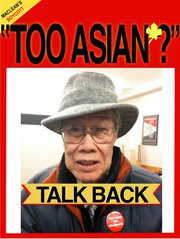17-03-2011
 Maclean’s magazine published an article, titled “Too Asian”? on Thursday, Nov. 11, 2010, which employs racial stereotypes and racial profiling of Asians. The article has angered many Canadians. Many Canadians have asked Maclean’s for an apology and remedies. To find out more about the article and the community action, please go to:
Maclean’s magazine published an article, titled “Too Asian”? on Thursday, Nov. 11, 2010, which employs racial stereotypes and racial profiling of Asians. The article has angered many Canadians. Many Canadians have asked Maclean’s for an apology and remedies. To find out more about the article and the community action, please go to:







